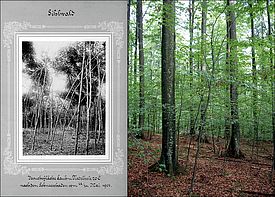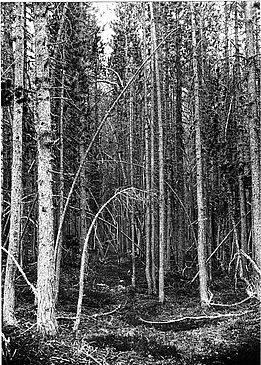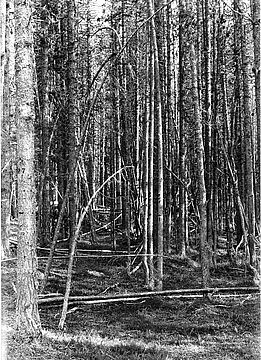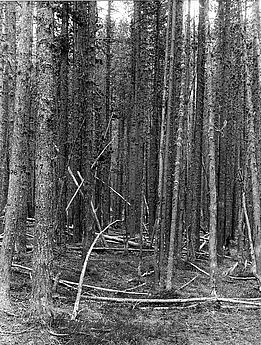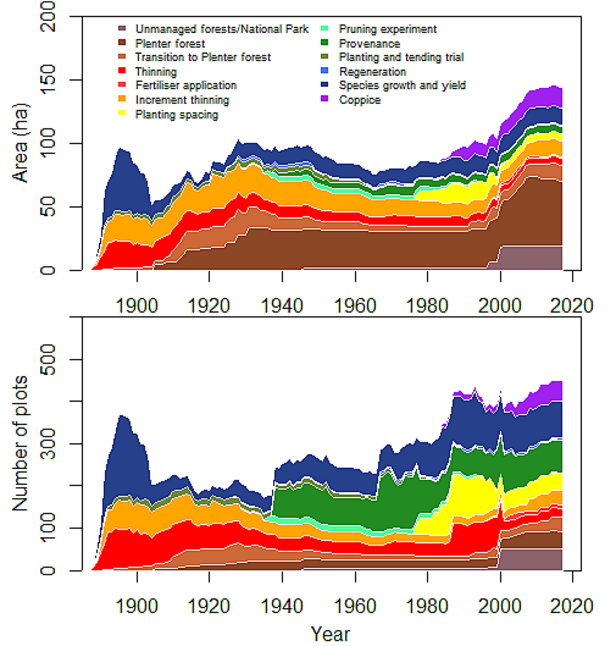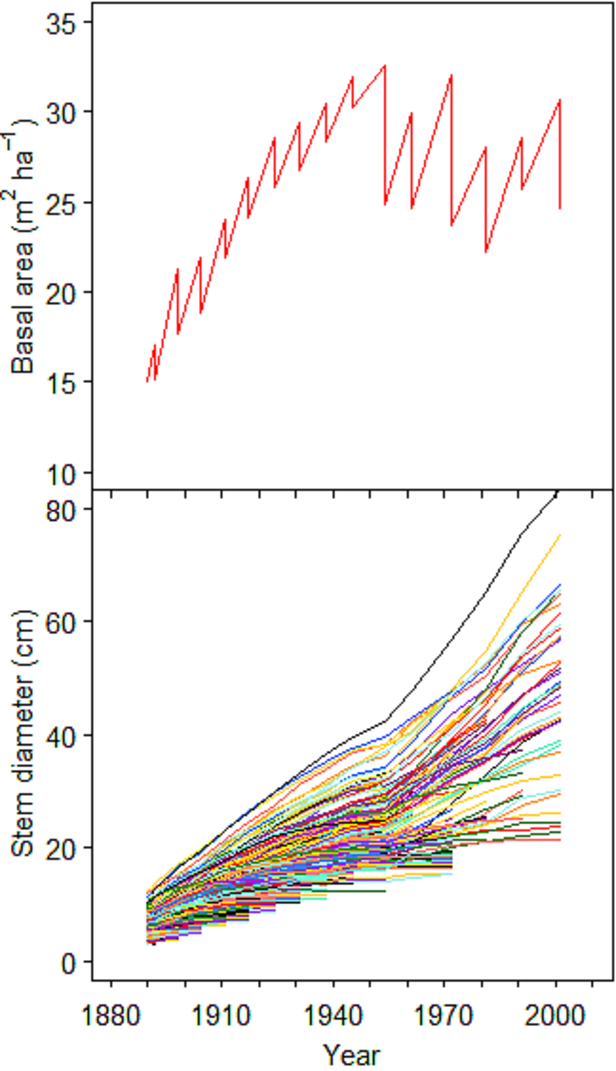WSL has been investigating the growth of trees and forests since being founded in 1885. The results of this research form an important basis for sustainable forest management. The present day goal of this research is to understand how forests develop in a changing environment under the influence of forest management.
Research topics ¶
Forest growth research at WSL focuses on the following research topics:
- The influence of tree species, mixtures of tree species and silvicultural interventions on growth, structure and protective effects against natural hazards, while considering site gradients in resource availability and climatic conditions.
- Conversion of relatively uniform stands into continuous cover forests to promote structural diversity when this is expected to achieve higher levels of productivity or other ecosystem services.
- The influence of tree species diversity and structural diversity on the productivity of forests.
- Site suitability of exotic tree species in a changing climate and their development in mixed stands.
- Timber production with chestnut-coppice in Ticino
- Provenance, planting and fertilization experiments
- Comparisons of managed and un-managed (naturally developing) forest development
These photos are an example of a photo series from one of the EFM plots located at Stabelchod (plot 05004000). The plot contains Pinus mugo with some regeneration of Pinus cembra. The photos show how the plot has developed from being relatively dense before self-thinning and finally opening up enough for regeneration to occur.
Research methods ¶
The forest growth research platform of WSL includes a unique network of 390 plots that are measured every 5 to 12 years. The diameter and height growth of the trees are measured, and the recruitment, mortality and management interventions are also recorded. The plots are located in all of the important forest types of Switzerland (see map). Many of the plots have been under observation for more than 50 years and 18 plots have been under observation for more than 100 years. The data set offers excellent research opportunities due to its long time series and the diversity of plots, including uneven-aged stands, mountain forests and mixed-species forests. This potential is further enhanced by the existence of a similar network of WSL plots in unmanaged forests (Natural Forest Reserves).
(Kopie 3) ¶
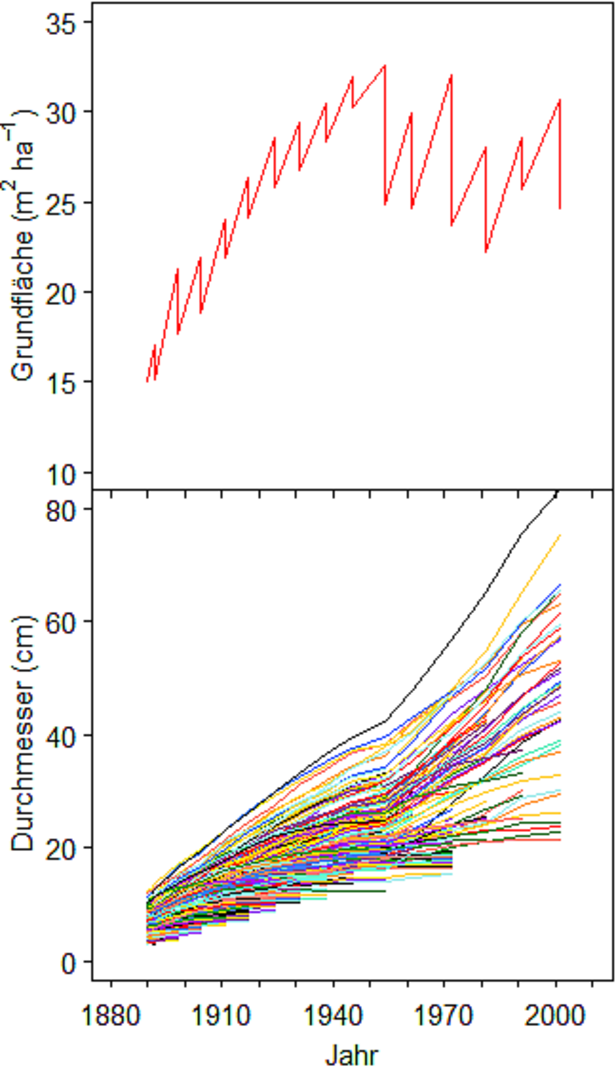
[Translate to Englisch:] Die Abbildung oben zeigt den Zuwachs auf einer Versuchsfläche in Zofingen (Nummer 41018000) seit 1890. Auf dieser Fläche dominiert Fagus sylvatica. Die obere Abbildung zeigt die Entwicklung der Basalfläche, wobei erkennbar ist, dass während der gesamten Aufnahmeperiode 15 Durchforstungen stattgefunden haben. Die untere Abbildung zeigt die Entwicklung der Stammdurchmesser aller Bäumen auf der Fläche. Hier fällt auf, dass eine zunehmende Durchforstungsinstensität in den 1950er Jahren (siehe obere Abbildung) zu einem erhöhten Zuwachs der Einzelbäume geführt hat (siehe untere Abbildung). Neben dem Stammdurchmesser werden Baumhöhe, Kronenlänge, soziale Stellung, Stammform, Baumkoordinaten und einige andere Variablen aufgenommen.
Contact ¶
Staff ¶
Publications ¶
The figure above is an example of growth data from a plot in Zofingen (Number 41018000) that has been measured since 1890. This plot is dominated by Fagus sylvatica. The top pane shows the development of basal area and indicates that 15 thinning events have occurred during the measurement period. The bottom pane shows the stem diameter development of all trees within the plot. Notice that the thinning intensity increased in the early 1950`s (see top pane) and as a consequence the growth rate of the individual trees accelerated (see bottom pane). In addition to stem diameters, variables measured on all EFM plots include tree heights, height to crown base, crown diameter, dominance class, stem form, spatial coordinates of each tree and several others.
